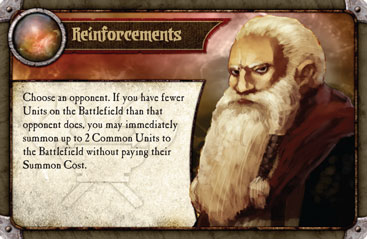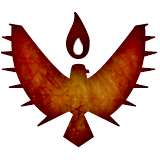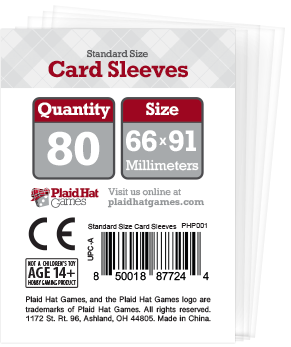Summoner Wars: A Meta-Gaming Experience
Part 1 of 3: The Big Three
Summoner Wars: A Meta-Gaming Experience:
Part 1 of 3: The Big Three
Introduction:
For those of you who are not familiar with me, my work here at Plaid Hat Games, and my PHG backstory, let me introduce myself. My name is Jake Chapman, and I've been playing Summoner Wars since Christmas 2009. Over the years I've seen the game of Summoner Wars change dramatically. It fascinated me that simple and fun game with easy to learn mechanics could be so complex and ever changing. So through this three part series, I've decided to take a look into what aspects of the game really built the strategies, what caused them, how they worked, and how and why they've changed over the years.

(Me circa late 2012, for those of you who don't know me)
What Were The Big Three?


The year was 2009 and Colby Dauch, owner and lead designer of Plaid Hat Games released a critically acclaimed board game, Summoner Wars. Now as with any game, a set of unique strategies developed that carved the play style of the game, this was the meta-game (or meta for short). This meta-game was built around the four separate factions that were contained in the two separate starter sets that had been released. The Guild Dwarves, the Cave Goblins, the Tundra Orcs, and the Phoenix Elves. Each deck had it's own unique theme, the Phoenix Elves were built around dealing direct damage, and not needing to rely on good rolls to win a game. The Tundra Orcs were the opposite, preferring to roll as many dice as possible and rely on big die rolls for devastating victories. The Cave Goblins swarmed the board with as many of their extremely cheap, and often times free units as they could. Lastly, the Guild Dwarves were a merciless machine designed for Wall destruction. These different themes, along with the units and events that each of the factions contained, led to three of the factions rising above the remaining starter set faction, and also above the future releases for quite some time. The Guild Dwarves, the Phoenix Elves, and the Tundra Orcs became known what is known as and sometimes feared in the Summoner Wars universe, The Big Three.
CUE's and Their Role In The Big Three:
The Big Three were a terrifying set of Factions. Each one had a two things in common between them. They promoted Champion heavy play and they each had CUE's (Catch Up Events). These two aspects are very closely intertwined within Summoner Wars. Champion heavy playing is a direct result of the CUE's, so to understand why The Big Three were so 'big', we must first look at CUE's their nature, how they are meant to work, and how they actually did, and the results of how they actually worked.
The theoretical concept of CUE's is this: Player A takes a lead by destroying some of Player B's early commons, therefore, Player A summons additional units to aid them in battle. Player A now has more units on the battlefield than Player B does, leaving Player B at a disadvantage. Player B then plays a CUE, swinging the game into a more level playing field once again. This leveling of the game was done with the two different types of CUE's, Reinforcements (not a major issue in the early meta-game), and Magic Drain (the card that really set the tone of early Summoner Wars).
First, let's discuss Reinforcements. which allowed them to summon 2 different commons, who each cost 2 Magic Points or less. This creates a Magic Swing of up to 3 Magic (+4 for the potential cost of the two commons – 1 (as you could have built Reinforcements as Magic by itself, but you didn't). Now this Magic Swing isn't anything major, in fact, it's the same as Magic Drain's. Though the tone of the two events are dramatically different. Magic Draino, on the other hand, literally punished the Player A in the previously described situation. It not only created the 3 point Magic Swing (+2 for the two you stole from the opponent, +2 for giving them to yourself, and -1 (as you could have built Reinforcements as Magic by itself, but you didn't).


The CUE's created a meta-game purely around themselves. In order to avoid CUE's the paradigm shifted, Player A no longer would summon additional units to the battlefield as they did before, and instead they built those commons, to keep their unit count low. This caused Player B to be at a disadvantage for some time, so they'd burn through their hands, and build more magic. This rapid burning of magic in order to avoid CUE's led to our next topic of discussion... Champion Heavy Play.
The Big Three's Champs:
“I'd guess the reason the early designs were champ-heavy were probably due to Colby's Heroscape background, which is sometimes called "Squadscape" since besides the most powerful Heroes, Squads often rule the day there. A big difference there is that when you move/attack with a "Squad" you activate all the figures of that Squad. Wouldn't it be interesting if that was the case in Summoner Wars...”
-Joseph Ellis (Joepinion) (click here to see the full discussion)
Now whether or not the early meta-game was built around Champion Heavy Play due to Colby's background in Heroscape, or due to the CUE conundrum, or a combination of both (this seems the most likely to me) is irrelevant. What matters is that it happened, and it became the norm of The Big Three, which dominated play early on.



Now whether or not the early meta-game was built around Champion Heavy Play due to Colby's background in Heroscape, or due to the CUE conundrum, or a combination of both (this seems the most likely to me) is irrelevant. What matters is that it happened, and it became the norm of The Big Three, which dominated play early on.
The race to build as much magic to get the big 'beast' type Champions was out. Each of the Big Three had one, Gror for the Guild Dwarves, Krung for the Tundra Orcs, and Fire Drake for the Phoenix Elves. Each one of these Champs had four things in common, First, they each had high life, thus a greater staying power. Second, they each had the ability to wade through Commons and lesser Champs alike. Third, they were the strongest Champs in each of their respective factions, but they were also backed by other powerful Champs. Lastly, they each were able to combo greatly with some of their faction's events (Hmmm... Each of the Big Three had A Hero Is Born... Coincidence? I think not). These things weren't as apparent in certain members of the Big Three, but for the most part, they held true. So each of the Big Three had big Champs, strong Events, and CUE's (The Guild Dwarves had two sets of CUE's, making them the distinctive leader among the Big Three). Nonetheless, these 'beast' Champs, along with the other two of their Faction, definitely made for trouble, as they were powerful, and couldn't be beaten unless you summoned a Champion to your aid, or summoned some Commons, but that ran the risk of getting hit by a CUE while you were already down.
So in summoning these big bad Champs, a player was able to deal with Commons and other Champions, while avoiding persecution from the CUE's. It was the best overall strategy for the game, though there was one faction that chose to stand out from the crowd...
The Cave Goblins Anti-Thesis:
Now not to say that the Cave Goblins weren't powerful, because they were (just in their own way that wouldn't truly come about until their Reinforcements and Second Summoner were released), it's just that unfortunately for Sneeks and his band of 0 cost swarmers, they weren't AS good as The Big Three. Though it's like comparing Apples to Oranges, as their playstyles were completely different. While the Big Three were focused on keeping their unit counts low as to avoid CUE's and building magic for their 'beast' Champs, the Cave Goblins were looking elsewhere. They were focused on summoning mass amounts of 0 cost Commons, and swarming and overwhelming the enemy with them.
A Cave Goblin player didn't care if he was hit by a few CUE's, as they didn't need to save up as much magic, because their Champions were priced at a unique discount (that which has not been seen in any other faction so far). They didn't have CUE's either, rather their events focused on Common based combo's, such as gaining more dice for attacks because you had more units adjacent to the target, or being able to move more units than you normally would be able to in a single turn. This is why I truly believe that Sneeks and his little Cave Gobos were earliest form of an Anti-Thesis to the Big Three that existed. This Anti-Thesis would be slightly expanded on with the releases of the Vanguard, Fallen Kingdom, and particularly the Jungle Elves, though it truly wouldn't be developed into a working Counter to the Big Three until years later.
The Big Three's Conclusion:
I would like to note before I conclude this article, that I could have gone into much much deeper detail as to the exact mechanics behind the game that caused the Big Three to work, but unfortunately, I don't think anyone would really want to read an 8 page, single spaced Article about the Big Three, and I wanted to keep this series easy and understandable to the Average Doug.
So in our conclusion of looking at the Big Three, due to the heavy use and fear of CUE's in the early game of Summoner Wars, Champion Heavy Playing was the way to win. It was effective, and efficient. Period.
Now an event that occurred two years after the initial release of the game completely changed the meta, which had already began to shift due to the releases of the new faction decks. So tune in next week for Summoner Wars: A Meta Gaming Experience: Part 2 of 3: The Master Set!





